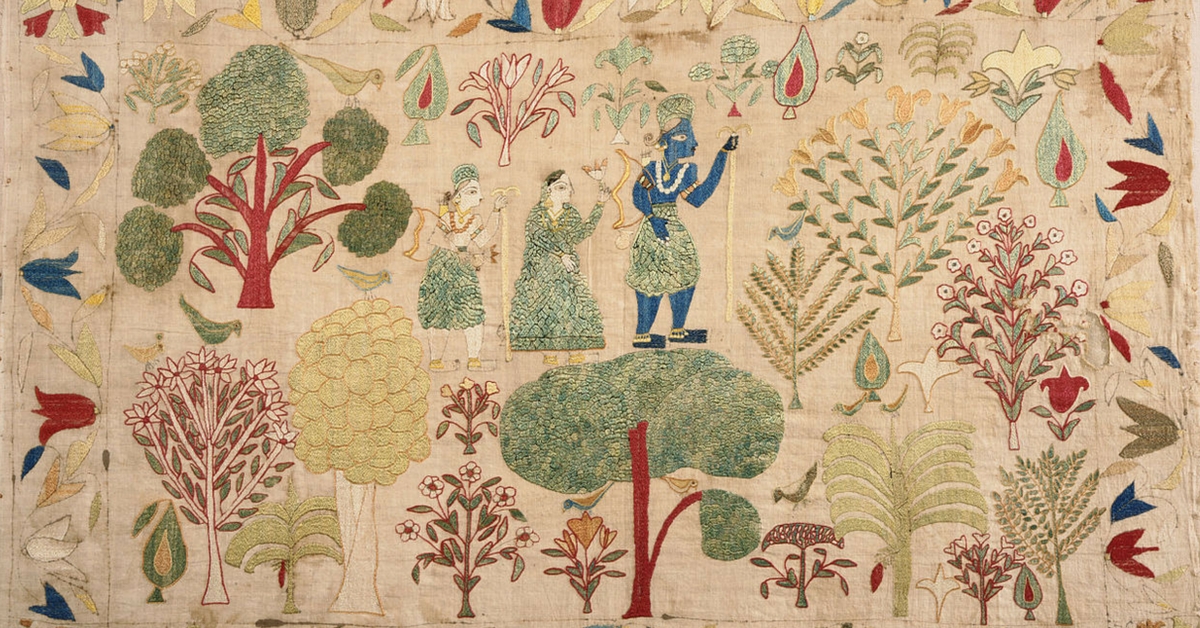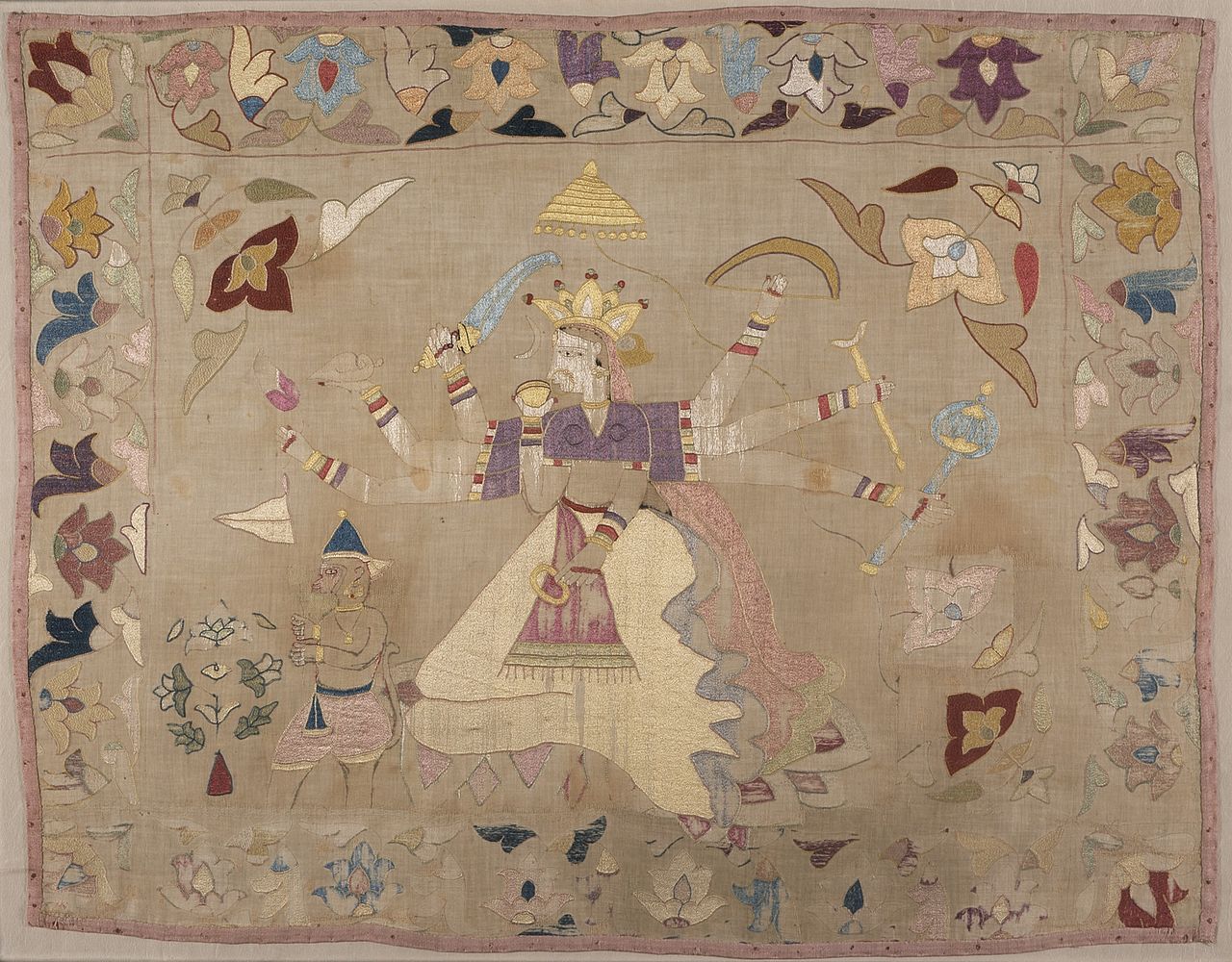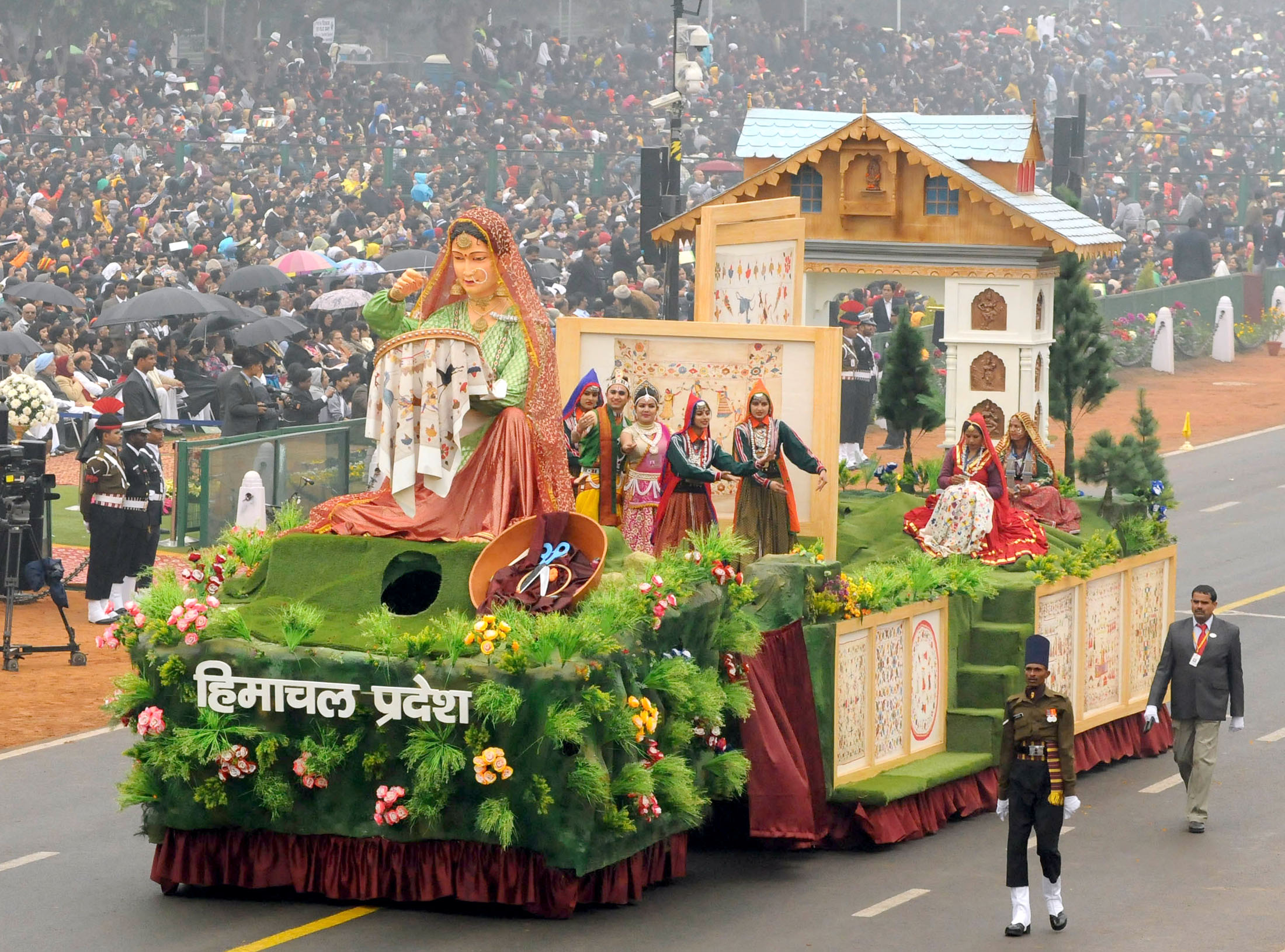The Little Known Story of Himachal Pradesh’s Unique Handkerchiefs That Were Embroidered by Queens
Deriving from Pahari paintings, the Chamba Rumal combines Himalayan miniature art with impeccable embroidery in a tradition that dates back to medieval India.

For most of us, the humble cloth handkerchief is just another nondescript item of everyday use. Bearing a monogram or delicate design in a corner—these hankies are usually plain, perfect for the mundane act of wiping hands and faces. But the Chamba Rumal (rumal means handkerchief) is no ordinary hankie, and certainly too rare and precious to wipe your face with.
Patronised by the royalty of Himachal Pradesh, the Chamba Rumal is a fine display of Himalayan embroidery and crafts traditions.
 A Chamba Rumal depicting a scene from the Ramayana. Source: Wikipedia
A Chamba Rumal depicting a scene from the Ramayana. Source: Wikipedia
The Chamba Rumal gets its name from Chamba, a hill-station in Himachal Pradesh, where it has been practised for centuries. The earliest records of the region dates back to 2nd century BC, making it one of the most ancient destinations in the state. The region is known for its history, architecture and landscapes but the local community is also known for its arts and crafts, in particular the miniature Pahari paintings.
The Pahari school of art has received royal patronage since the 17th century when it is believed to have originated in the region. Though miniature Pahari paintings are most commonly recognised, the term encompasses a variety of forms from murals to paintings. The impeccable needlework on the Chamba Rumals too is derived from the art movement, combining miniature art with embroidery.
You might also like: How a Conservationist’s Love for Chittara Art Led Her to Empower the Community Behind the Art Form
Chamba Rumals are typically made in square or rectangular fabric of varying sizes. The base art, characterised by intricate lines, is traditionally drawn by miniature art experts. Once the art is complete, the embroidery—usually undertaken by women—is meticulously executed on the fabric.
The earliest example of the embroidery incidentally can be found in Punjab — Bebe Nanki, sister of the Sikh spiritual leader Guru Nanak, reportedly embroidered one in the 16th century and the item was preserved in the state’s Hoshiarpur shrine. Another handkerchief made its way to Britain in 1883 when Raja Gopal Singh presented a Chamba Rumal to the British, embroidered with a scene from the Mahabharata, which was later added to the collection of London’s Victoria & Albert museum.
In the 17th century, the Chamba Rumal embroidery was done by the queens and royal ladies of Chamba for wedding dowries, important gifts and ceremonial coverings.
 A Chamba Rumal ceremonial covering by an unknown artist. Image source: Wikipedia
A Chamba Rumal ceremonial covering by an unknown artist. Image source: Wikipedia
The tradition gradually made its way out of palace walls and began to be practised by local craft clusters. The Rumals came to be an integral part of weddings, exchanged by the bride and groom’s families as a sign of goodwill.
In his book Chamba Himalaya: Amazing Land, Unique Culture, KR Bharti draws attention to the painstaking process of Chamba Rumal embroidery — using naturally dyed silk floss on mal-mal or khaddar — and the distinctive double-sided technique seen in the designs.
He writes, “The picture on both sides of the fabric is almost the same…The drawing is done in outline with fine charcoal or brush. The embroidery is done in a variety of colours by a double satin stitch carried forward and backward alternately. Both sides of cloth are stitched simultaneously so that the space on both sides is filled up making the design on both sides look equally effective and similar in content. That is why this technique is called dorukha (two-faced).”
The motifs on these handkerchiefs have traditionally drawn from indigenous tales, including the Ramayana and Mahabharata. The figures of Krishna and his accompanying Gopis are leitmotifs in this embroidery tradition, and the subject also draws from the Bhagvad Puranas, nature and the lives of the local community members.
Practiced actively till early 20th century, declining patronage from royal quarters led to the art slowly dying in the second half of the decade. Even as local artisans like National Award winner Maheshi Devi, Lalita Vakil, Chhimbi Devi and others have won laurels for their embroidery, the Chamba Rumal faded from public consciousness, even making way for cheap and inauthentic imitations.
In recent decades, revival efforts by NGOs and government bodies have turned the spotlight on the little-known art form again.
 The tableau of Himachal Pradesh featuring a Chamba Rumal installation at the Republic Day Parade 2017 in New Delhi. Source: PIB
The tableau of Himachal Pradesh featuring a Chamba Rumal installation at the Republic Day Parade 2017 in New Delhi. Source: PIB
Kamaladevi Chattopadhyay, freedom fighter and crafts revivalist, was among the earliest who took up the onus of keeping the art form alive in the years post independence. In 1992, Delhi Crafts Council (DCC) stepped in to revive the dying art form, and promote the little-known art form at a national level. Their first exhibition in 1999 showcased the recreated Rumals and travelled to many cities around the country.
DCC also established Charu, a training centre to equip craftspersons with the art form and enable them with the right resources for a sustainable means of livelihood. The organisation hosted its recent exhibition and sale of Chamba Rumal embroidery this April at Delhi’s India Habitat Centre, complete with guided tours and interactions with local artists.
You might also like: Meet the Gujarat Artisans Behind Emma Watson’s Costumes in the New Beauty and the Beast Movie
In recent times, one of the greatest impetuses to the art came in 2007 when the Chamba Rumal was accorded the Geographical Indication (GI) patent by the Geographical Indications Registry. It helped to curb the sale of inauthentic items and also brought the art form back into the spotlight.
At the 2017 Republic Day parade, Himachal Pradesh showcased a tableau for the first time in four years, showcasing a massive installation of the Chamba Rumal designed by Prof Him Chatterjee, head of Himachal Pradesh University’s visual art and painting department.
The greatest challenge faced by the Chamba Rumal embroiderers today is keeping the craft flourishing in a new age. Their strides towards revival may be small and measured, but the region’s dedicated karigars and revivalists have ensured that the embroidery tradition, often known as needle wonder, is being passed to future generations.
Like this story? Or have something to share? Write to us: [email protected], or connect with us on Facebook and Twitter.
NEW: Click here to get positive news on WhatsApp!
If you found our stories insightful, informative, or even just enjoyable, we invite you to consider making a voluntary payment to support the work we do at The Better India. Your contribution helps us continue producing quality content that educates, inspires, and drives positive change.
Choose one of the payment options below for your contribution-
By paying for the stories you value, you directly contribute to sustaining our efforts focused on making a difference in the world. Together, let’s ensure that impactful stories continue to be told and shared, enriching lives and communities alike.
Thank you for your support. Here are some frequently asked questions you might find helpful to know why you are contributing?


This story made me
-
97
-
121
-
89
-
167













